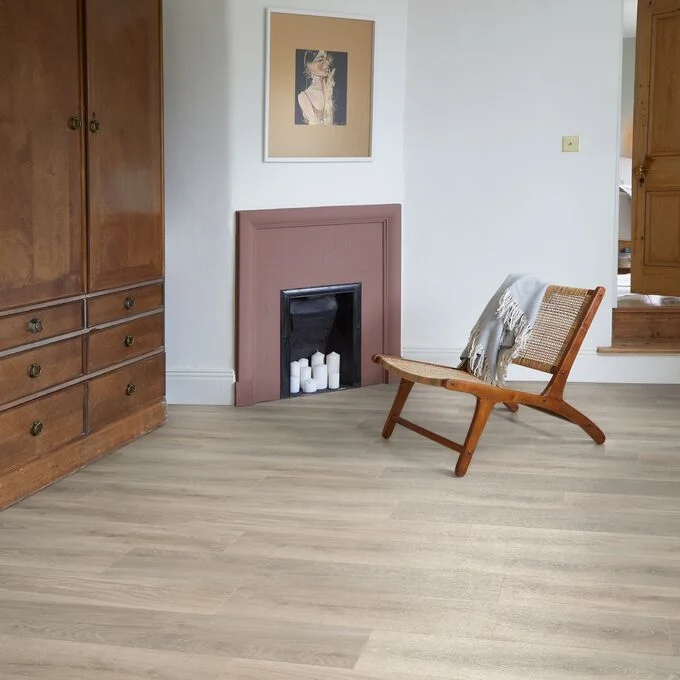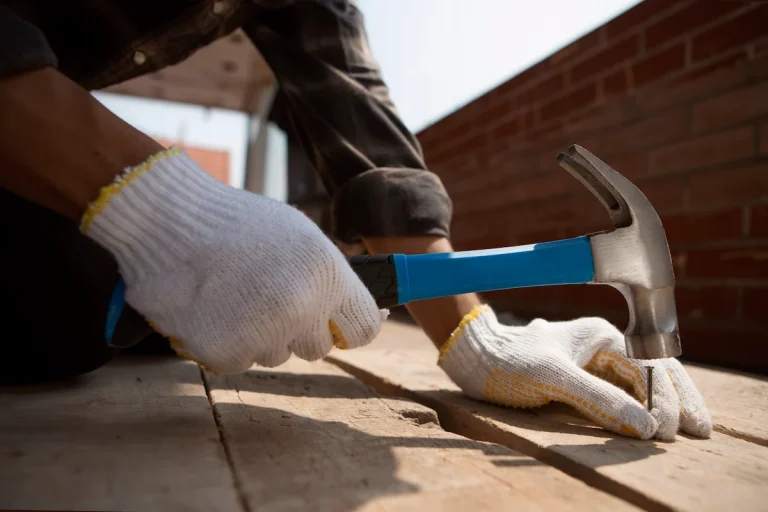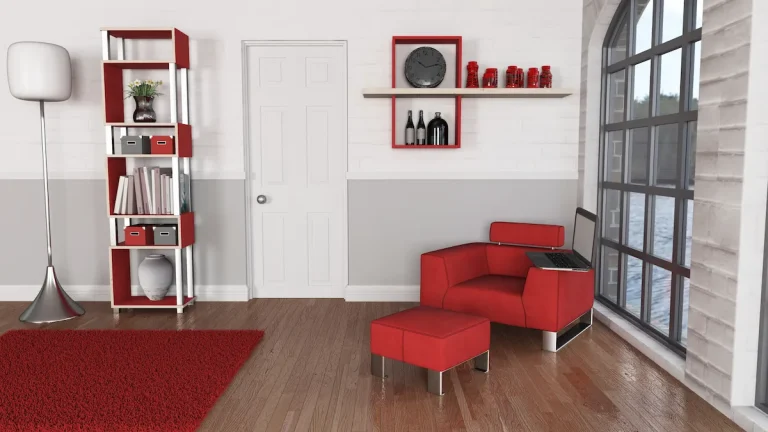Selecting the appropriate flooring for one’s home can be a challenging endeavor, particularly when evaluating options such as bamboo flooring and wood. Both materials present distinct aesthetics and advantages, rendering them popular selections among homeowners.
This article examines the characteristics of bamboo and wood flooring, emphasizing their similarities and differences concerning material composition, durability, cost, maintenance requirements, and sustainability. By the conclusion of this article, readers will possess a more comprehensive understanding of which flooring option aligns most effectively with their needs and lifestyle.
What Is Bamboo Flooring?
Bamboo flooring represents a sustainable and environmentally friendly alternative to traditional hardwood flooring, primarily sourced from the rapidly growing Moso bamboo species, which is recognised as a renewable resource with low environmental impact. In recent years, it has gained significant popularity owing to its distinctive aesthetic options and durability, making it a staple in sustainable building practices.
Various styles, such as strand woven bamboo and carbonised bamboo, contribute to its visual appeal and enhance its performance characteristics.
What Is Wood Flooring?
Wood flooring encompasses a range of flooring options crafted from natural hardwood species, including oak, maple, cherry, and walnut, as well as exotic options like Brazilian walnut and Red Oak. These options are primarily categorised into two types: solid hardwood and engineered hardwood, which each offer distinct durability comparison.
Wood flooring has long been a preferred choice in residential settings due to its timeless aesthetic, durability, and inherent natural beauty, contributing a warm and inviting atmosphere to any environment. Such options often include environmental sustainability considerations in their sourcing and manufacturing processes.
The Similarities Between Bamboo Flooring vs. Wood
Bamboo flooring and hardwood flooring exhibit several similarities that enhance their appeal as flooring options. Both materials offer excellent moisture resistance and present a diverse array of aesthetic choices, ranging from natural finishes to stained variations.
Furthermore, a durability comparison indicates that, when properly maintained, both bamboo and hardwood flooring can endure heavy foot traffic and provide a long-lasting surface with excellent moisture resistance.
The Differences Between Bamboo Flooring vs. Wood
Bamboo and wooden flooring share certain similarities; however, they also possess distinct differences that can significantly influence consumer choices. These differences include the variety of bamboo species available compared to hardwood species, as well as the Janka hardness ratings from the Janka hardness test that reflect their durability.
1. Material
The material composition represents one of the most significant distinctions between bamboo and wood flooring. Bamboo is derived from specific species of bamboo, whereas wood flooring is sourced from a variety of hardwood species, such as oak and maple, with choices available in both solid hardwood and engineered bamboo.
Among the most commonly used bamboo species for flooring are moso bamboo, recognised for its strength and durability, and tembusu bamboo, which is distinguished by its fine grain and appealing colour variations. These bamboo varieties not only enhance aesthetic appeal but also contribute to the overall resilience of the flooring.
When compared to hardwood options such as oak, maple, and cherry, bamboo typically demonstrates comparable hardness, making it a viable alternative. Many customers value the environmentally friendly characteristics of bamboo, which generally grows at a significantly faster rate than most hardwood trees, thus providing a more sustainable flooring solution.
2. Durability
Durability is a critical consideration when selecting between bamboo and wood flooring. For example, strand woven bamboo typically exhibits a higher Janka hardness rating compared to many hardwoods, making it an excellent choice for high-traffic areas. Conversely, refinishing hardwood presents distinct challenges and opportunities for maintenance.
When assessing flooring options, it is essential to take into account several factors that influence the overall longevity of both materials. The Janka hardness rating serves as a reliable indicator of a flooring material’s resistance to denting and wear. Bamboo’s robust structure, particularly in strand woven forms, often surpasses that of softer hardwoods. However, certain premium hardwoods, such as oak and maple, can also offer remarkable durability when properly maintained.
Environmental factors, including humidity and temperature, can significantly impact the durability of both flooring options. Furthermore, the finish applied to the wood can either enhance or diminish its protective qualities.
3. Cost
When evaluating the cost comparison between bamboo flooring and hardwood flooring, bamboo is frequently regarded as a more economical option, particularly with regard to initial purchase and installation costs. In contrast, solid hardwood may incur higher expenses; however, it offers long-term value.
In assessing the price per square metre for these two prevalent flooring types, several factors emerge that significantly influence overall expenses. For example, bamboo, derived from a rapidly renewable resource, generally has lower sourcing costs, which contribute to its affordability. Installation complexity can vary; bamboo flooring can often be installed as a floating floor, making DIY projects feasible and potentially reducing labour costs.
In contrast, solid hardwood necessitates skilled labour for installation, which can considerably increase expenses. Additionally, it is crucial to consider potential long-term savings—while bamboo may be less durable than hardwood, its lower upfront costs may appeal to budget-conscious homeowners.
Consequently, a thorough evaluation of these factors can assist in making a well-informed flooring decision.
4. Installation
The installation process for bamboo and wood flooring can differ significantly, with bamboo flooring often offered in both do-it-yourself (DIY) options and professional installation types. In contrast, engineered hardwood may require specific techniques to achieve optimal results.
When contemplating a flooring upgrade, it is essential to assess not only the aesthetic appeal but also the installation requirements associated with each material. Bamboo, available in planks or tiles, typically features user-friendly locking mechanisms that facilitate straightforward DIY projects, making it an appealing option for homeowners seeking cost-effective solutions. Conversely, engineered hardwood generally necessitates a more advanced understanding of flooring installation techniques and may require specialised tools such as a moisture meter and a pneumatic nailer.
Essential tools for bamboo installation include:
- Measuring tape
- Utility knife
- Spacers
- Rubber mallet
While skilled professionals can ensure a precise fit and finish with hardwood flooring, DIY enthusiasts should be aware of the labour involved, particularly with regard to acclimatising the material prior to installation.
5. Maintenance
Maintenance routines for bamboo flooring and hardwood flooring vary significantly. Both types of flooring require regular cleaning to prevent damage; however, the refinishing process for hardwood may be more complex and often necessitates professional services, particularly depending on the floor’s wear and age.
Proper maintenance is critical for ensuring both longevity and aesthetic appeal. Bamboo flooring, known for its resilience, requires daily sweeping or vacuuming to remove dirt and debris, while occasional damp mopping is recommended to maintain its lustre. In contrast, hardwood flooring necessitates more meticulous care—cleaning should ideally occur on a weekly basis, with refinishing scheduled every 5 to 10 years, depending on usage and the type of finish applied.
- Hardwood Care: Utilise a soft bristle broom or vacuum equipped with a hardwood attachment.
- Bamboo Care: Avoid excessive moisture to prevent warping.
- Refinishing: It is advisable to consider hiring a professional to prevent potential damage.
Maintaining these flooring options not only preserves their beauty but also enhances their durability, ensuring that both remain valued elements of any home.
6. Sustainability
Sustainability is a critical factor to consider when comparing bamboo flooring to hardwood flooring. Bamboo is often recognised as a sustainable building material due to its rapid growth as a renewable resource, whilst hardwood flooring can exert a considerable environmental impact, depending on its sourcing and management practices.
When examining the environmental benefits of bamboo, it is important to note that this grass species can achieve maturity in as little as three to five years, rendering it a remarkably fast renewable option. In contrast, many hardwood species require decades or even centuries to mature, thereby imposing a greater strain on natural ecosystems as forests are depleted.
- Bamboo exhibits natural resistance to pests, resulting in a diminished reliance on chemical treatments.
- Hardwoods frequently necessitate clear-cutting techniques that are detrimental to biodiversity.
- The sourcing of bamboo typically involves less environmental degradation compared to some conventional timber practices.
In summary, bamboo flooring is distinguished not only by its aesthetic appeal but also by the considerable environmental advantages it offers, particularly when compared to the practices associated with various hardwood species.
Bamboo vs. Wood Flooring: Which Is Better?
In the comparison of environmental sustainability between bamboo flooring and traditional timber flooring, bamboo frequently demonstrates a superior profile due to its rapid growth cycle and reduced carbon footprint.
In contrast, hardwood flooring can have a substantial negative impact on forests and ecosystems if not sourced in a responsible manner.
a. Better for High-Traffic Areas
Determining the most suitable flooring type for high-traffic areas necessitates a comparison of durability. Bamboo flooring typically exhibits a higher Janka hardness rating than many hardwood flooring options, including popular choices like Red Oak and White Oak, which enhances its resistance to wear and tear caused by foot traffic.
b. More Resistant to Moisture
In the context of moisture resistance, bamboo flooring, particularly carbonized bamboo, generally outperforms many hardwood flooring alternatives. Its unique structure enables it to endure humidity and moisture, thereby making it a suitable option for environments that are susceptible to spills and dampness.
c. More Scratch-Resistant
In terms of scratch resistance, bamboo flooring, tested against the Janka hardness test, typically demonstrates superior performance compared to various hardwood flooring options, owing to its higher Janka hardness ratings. These ratings serve as a reliable indicator of greater durability against scratches and dents.
d. More Design Options
In terms of design options, both bamboo flooring and hardwood flooring present a variety of aesthetic possibilities. However, bamboo flooring distinguishes itself with unique styles such as strand-woven, carbonised finishes, and vertical grain or horizontal cut patterns, whereas hardwood flooring offers classic appearances through a diverse selection of species, including Red Oak, White Oak, and Brazilian walnut.
e. More Suitable for DIY Installation
For individuals who prefer do-it-yourself projects, bamboo flooring is generally more suitable for installation compared to hardwood flooring.
Many bamboo products, particularly those made from Moso bamboo, are specifically designed with user-friendly installation methods, whereas hardwood flooring typically requires professional assistance to achieve optimal results.
f. More Cost-Effective in the Long Run
Evaluating the long-term cost-effectiveness of bamboo flooring versus hardwood flooring necessitates a thorough examination of initial investment, maintenance costs, and potential longevity. While bamboo may present lower upfront costs, hardwood flooring can occasionally provide superior long-term value due to its refinishing opportunities.
Choosing between bamboo flooring and traditional wood flooring comes down to your priorities and preferences. Bamboo offers an eco-friendly and cost-effective alternative with a unique aesthetic, while wood provides timeless appeal and a range of styles. Both options have their advantages, from durability to visual impact, making either an excellent choice for your space.
At TEKA Flooring, we understand the importance of finding the perfect flooring solution to match your needs and vision. Make an appointment now to consult with our expert and choose your best flooring options in our showroom.
Read also:

































